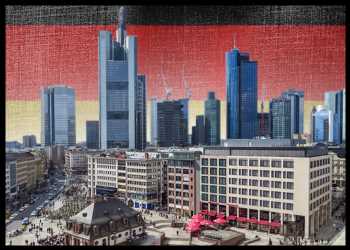
Germany avoided a recession in the first quarter as the economy stagnated with the fall in household and government spending offsetting the improvements in capital formation and exports. Inflation in the biggest euro area economy eased more than expected in April largely due to the base effects and slowing energy price growth.
Another data showed that the sluggish economic activity at the start of the year led to an increase in unemployment but the overall labor market remained strong.
Gross domestic product registered flat growth after contracting 0.5 percent in the fourth quarter, preliminary data from Destatis revealed. The nil growth confounded the 0.2 percent expected growth.
Although more details on the GDP breakdown are currently unavailable, Destatis said the final consumption expenditure of both households and government declined in the first quarter. In contrast, positive contributions came from capital formation and exports.
Calendar-adjusted GDP dropped unexpectedly by 0.1 percent, reversing the fourth quarter’s 0.8 percent expansion. The economy was forecast to climb 0.3 percent.
At the same time, price-adjusted GDP growth held steady at 0.2 percent in the first quarter. Detailed results for the first quarter are due on May 25.
The International Monetary Fund forecast the German economy to shrink 0.1 percent this year and to expand 1.1 percent in 2024.
Germany’s Federal Labor Agency reported that the number of people out of work increased by 24,000 in April after rising 19,000 in March and 8,000 in February. Unemployment was forecast to rise 10,000.
Nonetheless, the jobless rate remained unchanged at 5.6 percent, in line with expectations.
The spring revival on the labor market remains weak in April due to sluggish economic activity, said Andrea Nahles, chairperson of the Federal Labor Agency. However, the job market is in stable condition, the official added.
The monthly labor force survey from Destatis showed that there were 1.26 million unemployed in March. That was a decrease of 31,000, or 2.4 percent from the previous year. The jobless rate dropped to 2.9 percent from 3.0 percent a year ago.
On a seasonally adjusted basis, the jobless rate fell to 2.8 percent in March from 2.9 percent in February.
Flash estimates from Destatis showed that consumer price inflation slowed to 7.2 percent in April from 7.4 percent in March. The rate was forecast to ease to 7.3 percent.
For the slowdown, there was a base effect on the index as prices increased sharply in April after energy prices soared following the war in Ukraine. In addition, government measures to help households to meet energy prices also contributed to the current slowdown.
Cost of goods moved up 9.3 percent but slower than March’s 9.8 percent increase. Services cost climbed 4.7 percent after a 4.8 percent rise.
On a monthly basis, overall consumer prices gained 0.4 percent, slower than the expected 0.6 percent. Final data is due on May 10.
The harmonized index of consumer prices, the EU measure of inflation, slowed to 7.6 percent in April, while the rate was seen unchanged at 7.8 percent. A similar slower rate was last reported in March 2022.
The HICP climbed 0.6 percent from the previous month, slower than forecast of 0.8 percent.
Official data on foreign trade prices showed that import prices declined for the first time since January 2021. Import prices fell 3.8 percent annually, offsetting a 2.8 percent rise in February.
Month-on-month, import prices posted a drop of 1.1 percent but slower than the 2.4 percent decrease in February.
Source: Read Full Article